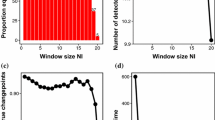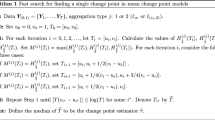Abstract
We view the task of change detection as a problem of object recognition from learning. The object is defined in a 3D space where the time is the 3rd dimension. We propose two competitive probabilistic models. The first one has a traditional regard on change, characterized as a ’presence-absence’ within two scenes. The model is based on a logistic function, embedded in a framework called ’cut-and-merge’. The second approach is inspired from the Discriminative Random Fields (DRF) approach proposed by Ma and Hebert [KUMA2003]. The energy function is defined as the sum of an association potential and an interaction potential. We formulate the latter as a 3D anisotropic term. A simplified implementation enables to achieve fast computation in the 2D image space. In conclusion, the main contributions of this paper rely on : 1) the extension of the DRF to a 3D manifold ; 2) the cut-and-merge algorithm. The application proposed in the paper is on remote sensing images, for building change detection. Results on synthetic and real scenes and comparative analysis demonstrate the effectiveness of the proposed approach.
Preview
Unable to display preview. Download preview PDF.
Similar content being viewed by others
References
Besag, J.: On the statistical analysis of dirty pictures. Journal of Royal Statistical Soc. B48, 259–302 (1986)
Garcin, L., Descombes, X., Zerubia, J., Le Men, H.: Building extraction using a Markov point process. In: Proc. ICIP, Greece (2001)
Carvalho, L.M.T., Fonseca, L.M.G.: Digital change detection with the aid of multiresolution wavelet analysis. Int. J. Remote. Sens. 22(18), 3871–3876 (2001)
Crandall, D., Felzenszenzwald, P.: Spatial priors for part-based reco-gnition using statistical methods. In: Proc. CVPR, SanDiego (June 2005)
Geman, S., Geman, D.: Stochastic relaxation, Gibbs Distribution and Bayesian Restoration of Images. IEEE PAMI 6(6) (1984)
Irvin, R.B., McKeown, D.M.: Method for exploiting the relationship between buildings and their shadows in aerial imagery. IEEE Trans. Syst. Man Cybern 19, 1564–1575 (1989)
Kulschewski, K.: Building recognition with Bayesian Networks. In: Workshop on Semantic Modelling for the Acquisition of Topographic Images and Maps, Bonn, Germany (1997)
Kumar, S., Hebert, M.: Discriminative Random Fields: A Discriminative Framework for Contextual Interaction in Classification. In: Proc. ICCV (2003)
Kumar, S., Hebert, M.: Man-Made Structure Detection in Natural Images using a Causal Multiscale Random Field. In: Proc. CVPR (2003)
Krishnamrchari, S., Ag: Delineating Buildings by Grouping Lines with MRFs. IEEE Trans. on Image Processing 5(1) (1996)
Lin, C.G., Nevatia, R.: Building Detection and Description from a Single Intensity Image. CVIU 72(2), 101–121 (1998)
Lafferty, J., McCallum, A., Pereira, F.: Conditional random fields: Probabilistic models for segmenting and labeling sequence data. In: Proc ICML (2001)
Li, S.Z.: Markov Random Field Modeling in Computer Vision. Springer, Tokyo (2001)
Marr, D.: Vision. Ed. Freeman and Company, NY (1982)
Maas, H.-G.: Closed solutions for the determination of parametric building models from invariant moments of airborne laserscanner data. IAPRS, XXXII(B3) (1999)
Mayer, H.: Automatic Object Extraction from Aerial Imagery: A Survey Focusing on Buildings. CVIU 74(2), 138–149 (1999)
Minka, T.P.: Algorithms for Maximum-Likelihood logistic Regression. Statistics Tech Report 758, Carnegie Mellon University
Open CVcourses, CVPR01 course, http://sourceforge.net/projects/opencvlibrary
Paparoditis, N., Cord, M., Jordan, M., Cocquerez, J.-P.: Building Detection and Reconstruction from Mid- and High-Resolution Aerial Imagery. CVIU 72(2) (November 1998)
Venkateswar, V., Chellappa, R.: A hierachical approach to detection of buildings in aerial images. Tech. Rep. CAR-TR 567, Univ. of Maryland (1991)
Special section on Syntactic and structural pattern recognition. IEEE pattern analysis and machine intelligence 27(7) (July 2005)
Boykov, Y.: Discrete Optimization Methods in Computer Vision. In: Proc. CVPR 2005, SanDiego (2005)
Author information
Authors and Affiliations
Editor information
Editors and Affiliations
Rights and permissions
Copyright information
© 2006 Springer-Verlag Berlin Heidelberg
About this paper
Cite this paper
Liu, W., Prinet, V. (2006). Probabilistic Modeling for Structural Change Inference. In: Narayanan, P.J., Nayar, S.K., Shum, HY. (eds) Computer Vision – ACCV 2006. ACCV 2006. Lecture Notes in Computer Science, vol 3851. Springer, Berlin, Heidelberg. https://doi.org/10.1007/11612032_84
Download citation
DOI: https://doi.org/10.1007/11612032_84
Publisher Name: Springer, Berlin, Heidelberg
Print ISBN: 978-3-540-31219-2
Online ISBN: 978-3-540-32433-1
eBook Packages: Computer ScienceComputer Science (R0)




